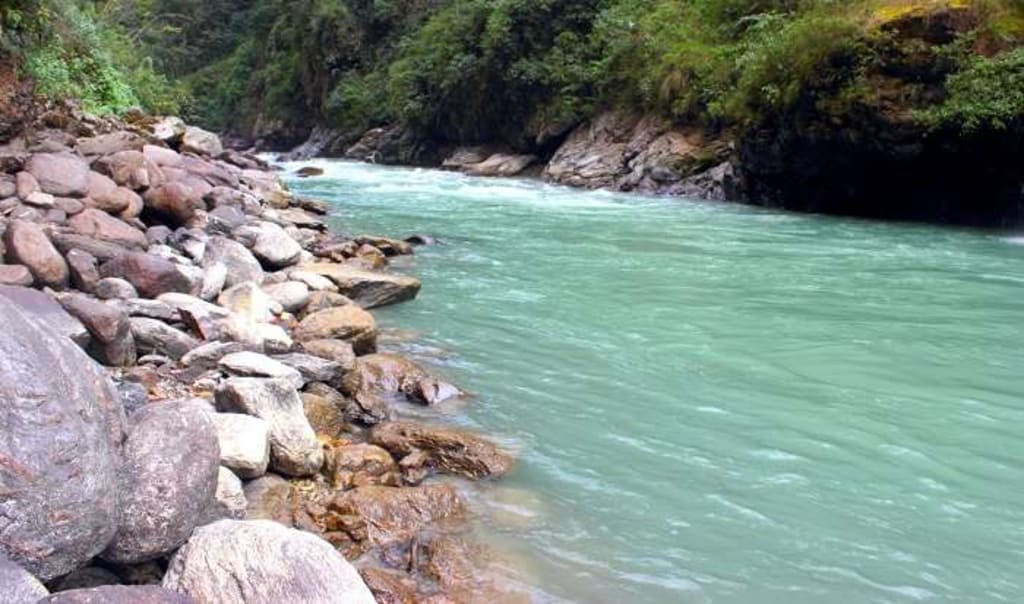Koshi-Biggest river in Nepal
Koshi-Biggest river in Nepal

This is the first of a three-part series on the history of dams in India and Nepal near Koshi, an important tributary of the Ganges River. The Koshi River (KO) (see below) is a 322-mile-long [322 km] north gorge of the Ganga River in northeastern Nepal in northeastern India and in the state of Bihar. It forms a confluence of three streams, Sun Kosi, Arun Kosi, and Tamur Kosi, about 21 miles [21 km] west of Dhankuta, Nepal.
The eastern part of the country is flooded with the Kosi River and seven rivers. From these rivers, Sapt and Kosi flow into the Himalayan mountains and flow into the southern plains of Nepal to the Indian state of Bihar. Along with its river, the river drains a third of eastern Nepal and parts of Tibet, including the highest mountain in the country, Mount Everest.
Ten major rivers flow from the Himalayas and extend more than 1,400 miles [2,400 km] through India, China, Nepal, India, Pakistan, and Afghanistan, providing clean water to 1.3 billion people in its area. Many rivers in Nepal come from the Nepal side of the Himalayas, but not all of them come from Tibet, and there are important rivers to cross the border between Tibet and Nepal. The Ganges has no source in Tibet but the source of this river is in Northwest India and several important Ganges rivers from Tibet: the Bote, Kosi, Arun, and Karnali rivers.
Today, the Ganges provides 400 million people who depend on it for drinking, bathing, and watering. Like Nepal's largest river basin, the Koshi River flowing through a well is the world's most important water source. Koshi's references go back to ancient myths and inscriptions where the river was feared for the chaos it created during the floods and was revered for the life-giving abundance.
Researchers from the International Water Management Institute (IWMI) in Nepal have investigated the potential impacts of climate change on water sources and river development in a new study on the effects of climate change on water availability and development in the Koshi Basin in Nepal and predictions for the 2030s and 2050s. The people of this region will look forward to the future of the Himalayan glaciers and changes in the behavior of rivers like the Sapt, Kosi, and Ganges. This may be due to increased rainfall and extreme weather events such as flooding in dangerous coastal areas and river basins.
As a result, river water seeps into rivers and streams and does not enter the river. This draws the area around the river and draws its water from the region. This makes life difficult for the people of the Sapt Kosi River basin, especially farmers.
The Koshi River, one of the main tributaries of the Ganga, flows some 75,000 square miles [75,000 sq km], the size of Bhutan. Koshi, which crosses Nepal before flowing into the Gaya River in eastern India, is the lifeblood of millions of people. Maha Kali, also known as Kali, flows along the Nepal-Indian border west of the Rapti River and is considered a tributary of the Rapti River.
Kusama is a village in the province of Sunsari in the lowlands of southern Nepal, three miles [5 km] from the Indian border, on the eastern bank of Nepal's main river, the Koshi. In Nepali, Bhote Kosi means the Tibetan river but is Tibet and Kosi is the Koshi River. India has succeeded in exploiting this source by building a large dam on the Kosi and Narayani rivers along with Nepal, known as the Kosis Gandak Project.
The dams prevent water from flowing from the river into the river, leading to further flooding. In front of the dam, the river flows like many streams in a large area. The 400 cm thick mounds that were pressed into the river ditch from SW and SE and the 150 cm long bodies that entered the dam from the south side are examples of river control.
From the dam, it is obvious to the naked eye that the river is very flowing. The accumulation of floodwaters in the river was forced out of an existing ditch, causing river banks to burst and the river to collapse in nearby settlements. A large stream of Kokeshi flows through the eastern bank.
The Sapt Kosi River is known for its frequent floods and unpredictable behavior. I stand at King Dam in Nepal, which presses a river about a mile wide between two fingers, where it flows into Bihar. On both sides of the river, the dams stretch as two cubits long, each about six miles [10 km] long.
A 2018 report showed that the waters of the Ganges are cleaner than clean in only four of the 41 coastal areas. King Dinesh Kumar Mishra, the world's largest mud and sand operator, Dinesh Kumar Mishra, an engineer who had worked for decades in flood control and was studying rivers in Bihar, told me.
It is a common practice to place loved ones in ashes on a riverbank and to scatter their ashes into the water. Two days after the violation, India's chief engineer denied any wrongdoing on the Koshi project, part of the Bihars Department of Water Resources, which manages the dam on both sides of the border. The river crosses with boats that meet the King's keys and bars.
Nepal and India have a long and painful history of dam breaches. While Prime Minister Nehru was visiting the affected areas, the government announced plans for a Koshi plan to be 150 km from Koshi from the bottom of the Himalayas in Nepal to its junction with Ganga in Bihar.





Comments
There are no comments for this story
Be the first to respond and start the conversation.